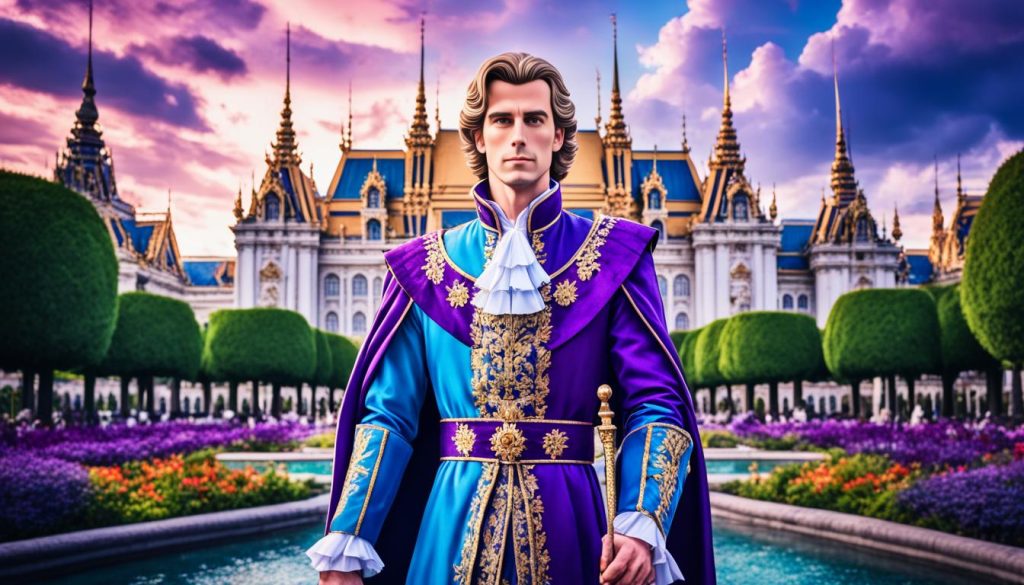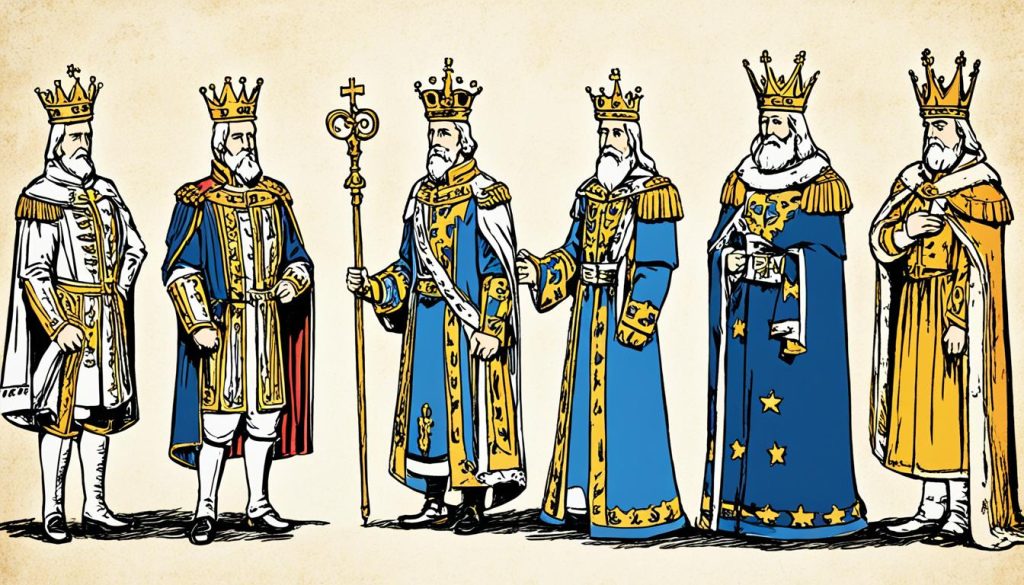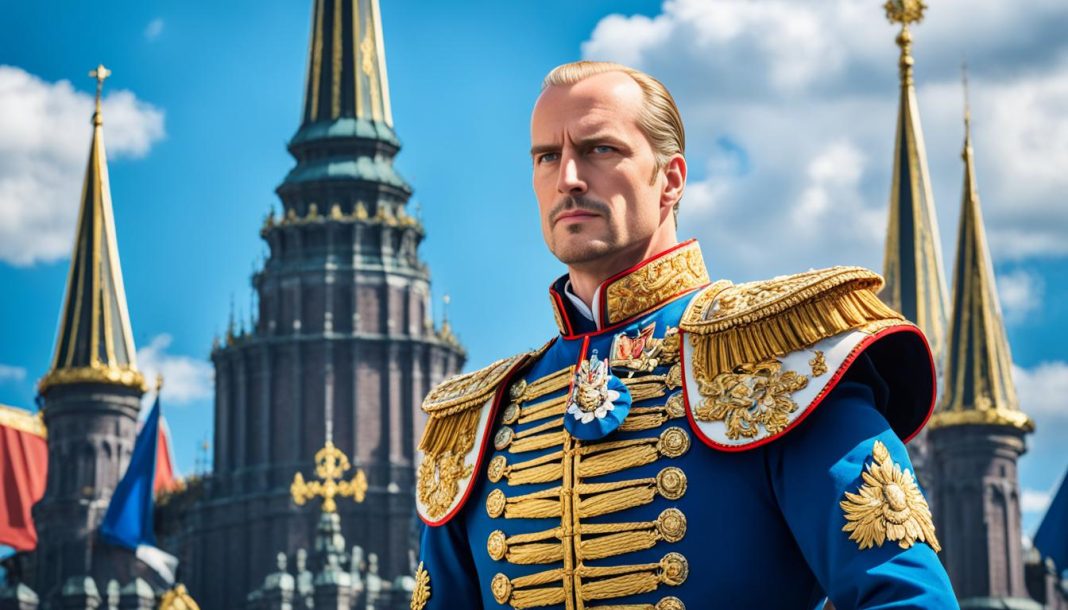Peter III: Russia’s Enigmatic Eighteenth-Century Tsar Story

Imagine a figure shrouded in controversy and mystery, whose brief reign as Russian Emperor left a lasting impact on the course of history. Meet Peter III, the enigmatic husband of Catherine the Great and father of Paul I, who ascended to the throne in the 18th century. As a member of the House of Romanov, Peter III’s life was filled with peculiarities and eccentricities that continue to captivate historians and enthusiasts to this day.
Throughout his reign, Peter III implemented controversial policies, disrupted traditional alliances, and pursued interests that set him apart from his predecessors. His relationship with Catherine the Great was tense and turbulent, leading to a coup that ended his reign and paved the way for Catherine’s ascendancy. Despite his short time on the throne, Peter III’s influence on Russian politics and society cannot be understated.
In this article, we will delve into the life of Peter III, exploring his early years, his ascendancy to the throne, his relationship with Catherine the Great, his controversial policies and reforms, his peculiarities and eccentricities, his family and succession, and his historical significance. We will also examine the cultural depictions and portrayals of this enigmatic figure in Russian art and literature.
Join us on a journey through 18th century Russia as we unravel the mysteries of Emperor Peter III’s life and explore his lasting impact on Russian history.
Key Takeaways:
- Peter III, the Russian Emperor, was the husband of Catherine the Great and the father of Paul I.
- His reign was marked by controversial policies, disruptions of alliances, and peculiarities.
- Peter III’s relationship with Catherine was tumultuous, leading to a coup that ended his reign.
- His policies and reforms set the stage for Catherine the Great’s reign and the expansion of the Russian Empire.
- Peter III’s eccentricities and enigmatic persona continue to fascinate historians and artists.
Early Life and Ascension to the Throne
Peter III, originally named Karl Peter Ulrich, was born into the House of Romanov in 1728. He grew up in Holstein-Gottorp and was groomed to become the ruler of Russia.
In 1762, upon the death of Empress Elizabeth, Peter III ascended to the throne as Emperor of Russia. His reign, however, was short-lived and filled with controversy.
Relationship with Catherine the Great
Peter III’s marriage to Catherine, who would later become known as Catherine the Great, in 1745 marked the union of two powerful figures in Russian history. However, their relationship was far from harmonious. Peter’s infidelity and Catherine’s growing political ambitions led to a tumultuous marriage filled with tension and betrayal.
“Their marriage was a complicated dance of power and intrigue,” says historian Maria Ivanova. “Catherine, a formidable stateswoman in her own right, was determined to secure her position within the Romanov dynasty while Peter struggled to live up to the expectations of his role as the emperor’s husband.”
Their conflicting interests and personal differences ultimately led to a breakdown in their relationship. While Peter indulged in extramarital affairs and neglected his duties as a husband, Catherine began forming her own political alliances within the court.
The turning point in their relationship came in 1762 when Peter ascended to the throne as Emperor of Russia. Catherine, sensing an opportunity to assert her power, took decisive action. In a carefully orchestrated coup, she had Peter overthrown and declared herself the ruler, marking the beginning of her legendary reign.
“Catherine’s decision to remove Peter from power and take control herself was a strategic move,” explains historian Alexander Petrov. “She recognized his weaknesses and saw an opportunity to shape the destiny of Russia according to her own vision. It was a bold and calculated move that would define her rule and shape the course of Russian history.”
With Peter III removed from power, Catherine the Great embarked on a reign that would transform Russia and elevate it to a global superpower. The House of Romanov now rested firmly in Catherine’s hands, and she would prove to be one of the most influential and successful rulers in Russian history.
Controversial Policies and Reforms
During his brief reign, Peter III implemented several controversial policies and reforms. His actions had significant implications for Russia’s internal affairs and foreign relations, ultimately contributing to his downfall and the subsequent coup led by Catherine the Great.
One of Peter III’s key objectives was to improve relations with Prussia, a move that strained Russia’s traditional alliance with Austria. His affinity for Prussian culture and military practices led to a shift in Russia’s geopolitical alignments, much to the chagrin of the Russian nobility and military.
Peter III also introduced policies that antagonized the Russian nobility. He relaxed military discipline, which was viewed as detrimental to the stability and prestige of the Russian armed forces. Additionally, Peter III granted religious freedoms, a decision that clashed with the prevailing orthodox religious practices and values of the time.
These controversial policies and reforms underscored Peter III’s unconventional approach to governance, further alienating him from key power centers within the Russian Empire. They sowed discontent and laid the groundwork for Catherine the Great’s subsequent rise to power through a coup, marking a critical turning point in the House of Romanov.
Peculiarities and Eccentricities
In addition to his controversial policies, Peter III was known for his peculiarities and eccentric behavior, setting him apart from the traditional Russian rulers of his time.
One of Peter III’s notable peculiarities was his admiration for Frederick the Great of Prussia. He idolized the Prussian king and even adopted Prussian customs and military practices. This fascination with Prussia led to tensions with Russia’s traditional ally, Austria, and further contributed to Peter’s unpopularity among the Russian nobility.
Furthermore, Peter III had a genuine fascination with the military. He derived great pleasure from playing with toy soldiers, often spending hours engaged in imaginative battles. This peculiar interest in military toys showcased his childlike enthusiasm and added to the enigma surrounding his persona.
Overall, Peter III’s eccentricities and peculiar behavior highlighted his unique personality and unconventional interests. These characteristics, combined with his controversial policies, continue to fascinate historians and contribute to the intrigue surrounding the House of Romanov during the 18th century.
Legacy and Influence
Despite his short and controversial reign, Peter III, the Russian Emperor, left a significant impact on Russian history. His policies and reforms laid the groundwork for the transformative reign of Catherine the Great, effectively shaping Russia’s cultural and territorial expansion. Additionally, Peter III’s peculiarities and eccentricities played a role in the mythologization of his reign, fueling fascination with his enigmatic persona as part of the House of Romanov.
“Peter III’s reign may have been brief, but his influence on Russian history cannot be understated. His policies set in motion significant changes that Catherine the Great capitalized on during her reign, leading Russia into an era of territorial and cultural expansion.” – Russian historian, Natalia Ivanova
During his time as Emperor, Peter III implemented reforms that had a lasting impact on Russian governance and society. These reforms, such as relaxing military discipline and granting religious freedoms, challenged the established order and stirred discontent among the Russian nobility. While his rule was cut short, his efforts laid the foundation for the reforms and achievements that characterized Catherine the Great’s reign.
Catherine the Great’s successful reign, marked by territorial expansion and cultural flourishing, was in many ways built upon the groundwork laid by Peter III. His policies and initiatives set the stage for the growth and transformation that defined Russia’s future under Catherine’s rule, as the House of Romanov continued to shape the course of Russian history.
Mythologizing Peter III’s Reign
Peter III’s eccentricities and peculiar behavior fueled the fascination with his reign and posthumous legacy. His admiration for Frederick the Great of Prussia and adoption of Prussian customs and military practices set him apart from his predecessors, earning him both admiration and criticism. This unique persona contributed to the ongoing mythologization of his reign, further piquing interest in the House of Romanov and the enigmatic figure of Emperor Peter III.
Family and Succession
Peter III and Catherine had one son together, Paul I, who would later become Emperor of Russia. However, Peter’s reign was cut short, and Catherine the Great ultimately ruled as Empress for the majority of Paul’s life. The succession of Peter III marked a turning point in the House of Romanov and set the stage for future rulers of Russia.
Despite his controversial reign, Peter III’s legacy lived on through his son, Paul I, who ascended to the throne after Catherine’s death. Paul I continued the House of Romanov’s rule and attempted to reverse some of his father’s policies, seeking to restore Russia’s traditional alliances.

“The succession of Peter III was a critical moment in the House of Romanov. It paved the way for Catherine the Great’s long and influential reign, while also establishing a new chapter in Russian history with Paul I as the subsequent Emperor.”
Paul I’s rule was marked by internal strife and conflicts, as he faced opposition from both the nobility and his own sons. Despite his efforts to strengthen Russia’s position in Europe, Paul I was ultimately assassinated in a conspiracy. This event further reshaped the House of Romanov and set the stage for the next generation of rulers.
The succession of Peter III not only had immediate consequences for Catherine the Great and Paul I but also had long-lasting implications for the House of Romanov and the trajectory of Russian history.
Historical Significance
Despite his brief reign, Peter III holds historical significance as a figure who shaped the course of Russian history. His policies and eccentricities had a lasting impact on Russian politics and society, setting the stage for the reign of Catherine the Great and the subsequent expansion of the Russian Empire.
During his time as Russian Emperor, Peter III implemented controversial policies and reforms that would have far-reaching consequences. His emphasis on improving relations with Prussia strained traditional alliances, causing tensions with Austria. These decisions paved the way for a shift in Russian foreign policy and shaped the geopolitical landscape of the time.
“Peter III’s reign marked a turning point in the House of Romanov and in Russian history. His unique policies and unconventional thinking challenged established norms and laid the groundwork for future rulers to navigate a changing world.”
Furthermore, Peter III’s unorthodox behavior and eccentricities made him an intriguing figure in Russian history. His fascination with Prussian customs and military practices set him apart from previous Russian rulers, introducing a new cultural influence that would permeate Russian society.
Cultural Depictions and Portrayals
Peter III, the enigmatic Russian Emperor from the House of Romanov, has left a lasting impression on Russian art and literature. Artists and writers have been captivated by his complex personality and the controversies that surrounded his reign, leading to numerous depictions and portrayals in various artistic mediums.
These artistic representations seek to capture the essence of Peter III’s enigmatic nature, showcasing the complex interplay of his character traits and the tumultuous historical context in which he lived. Through their creations, artists and writers aim to shed light on the fascinating persona of this Russian Emperor and his place within the House of Romanov.
“Peter III’s portrayal in Russian art and literature offers a glimpse into the enigma that was the Russian Emperor. Artists and writers have skillfully delved into his complex personality, depicting his eccentricities and the controversies that defined his reign.”
This fascination with Peter III found its way into various forms of expression, from paintings and sculptures to poems and novels. These diverse artistic depictions add depth and dimension to our understanding of this enigmatic figure and his impact on Russian history.
One notable artwork that captures the essence of Peter III is the celebrated painting “Peter III and the Russian Court” by Nikolai Ge. This captivating piece portrays the Emperor surrounded by members of the Russian nobility, showcasing the conflicting power dynamics and tensions prevalent during his reign.
To further explore the iconic depictions of Peter III, let us delve into the world of Russian literature. In Alexander Pushkin’s renowned historical novel, “The Captain’s Daughter,” the character of Peter Grinev is based on Peter III. Pushkin masterfully weaves together historical accuracy with fictional elements, providing readers with a nuanced portrayal of the enigmatic Emperor.
These artistic representations and literary works contribute to the enduring fascination with Peter III and his place in Russian history. They serve as a reminder of the significance of his reign, the controversies that surrounded him, and the lasting impact he had on the House of Romanov.
Unlocking the Enigma of Peter III
To truly understand the complexities of Peter III’s character, we must turn to the artistic and literary depictions that have sought to unlock the enigma. Through their creative expressions, artists and writers offer insights into his life, reign, and the fascinating historical context of 18th century Russia.
Conclusion
In conclusion, Peter III was a controversial and enigmatic figure in Russian history. His brief reign as the Russian Emperor and his peculiarities have fascinated historians and enthusiasts, sparking numerous debates and discussions. Despite facing unpopularity among his subjects, Peter III’s influence on Russian politics and society cannot be underestimated.
His policies and reforms set the stage for Catherine the Great’s reign, which witnessed significant cultural and territorial expansion. The House of Romanov experienced a turning point with Peter III’s succession, shaping the future rulers of Russia. Peter III’s eccentricities and peculiar behavior have contributed to the mythologization of his reign, leaving behind a lasting legacy.
Peter III’s place in Russian history continues to be significant, serving as a lens through which we understand the complexities and dynamics of the Russian Empire. His reign sheds light on the challenges faced by rulers and the impact they have on the socio-political landscape of a nation. The House of Romanov owes much of its historical narrative to Peter III, a figure who remains an intriguing enigma in Russian historical discourse.
Thanks For Reading…Peter III: Russia’s Enigmatic Eighteenth-Century Tsar
How much did you like Peter III: Russia’s Enigmatic Eighteenth-Century Tsar? Please share your views in the comment box. Also, please share this story with your friends on social media so they can enjoy it, and for more such stories, please bookmark storiespub.com.
Check out other stories that we have:
























